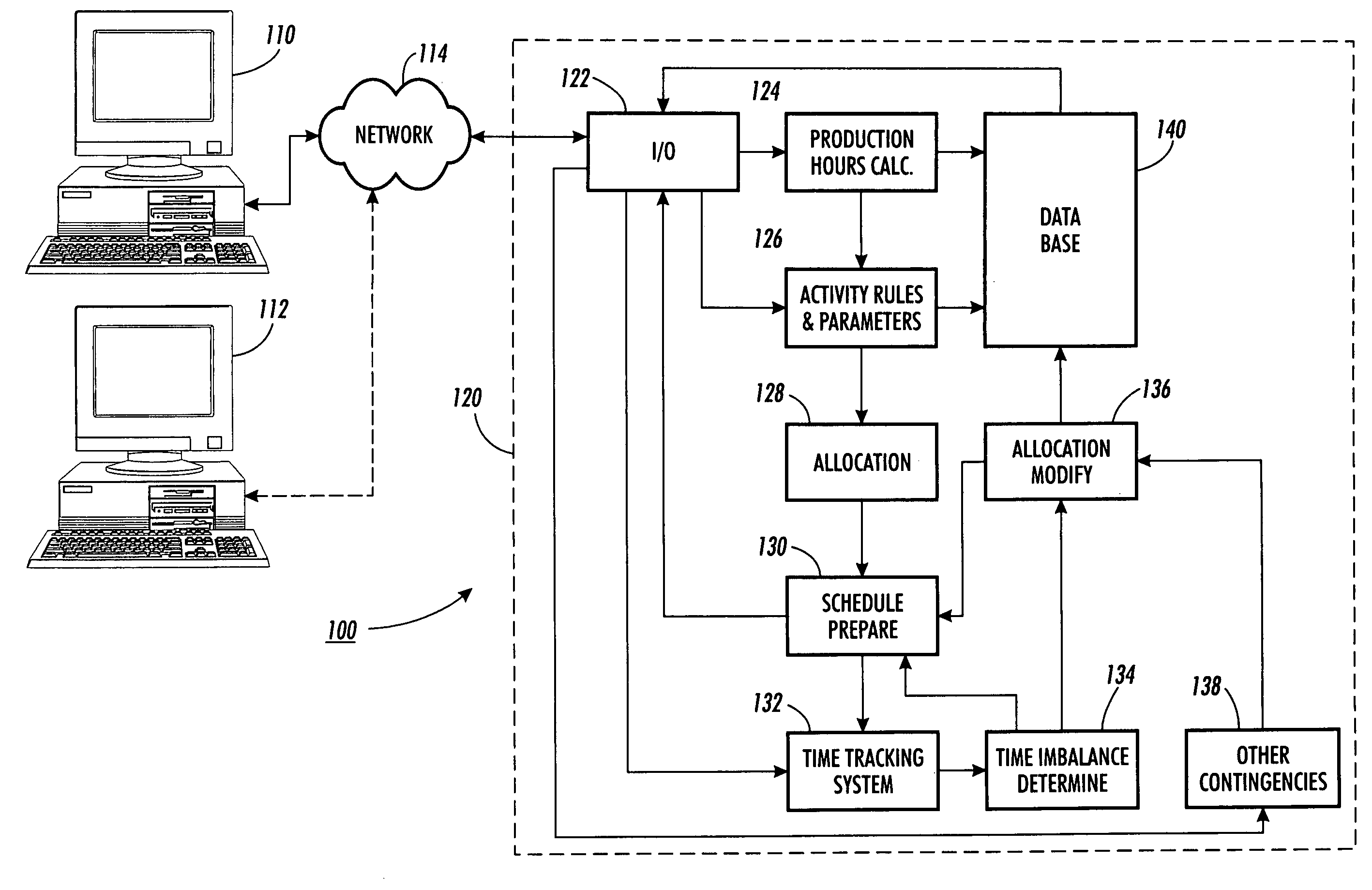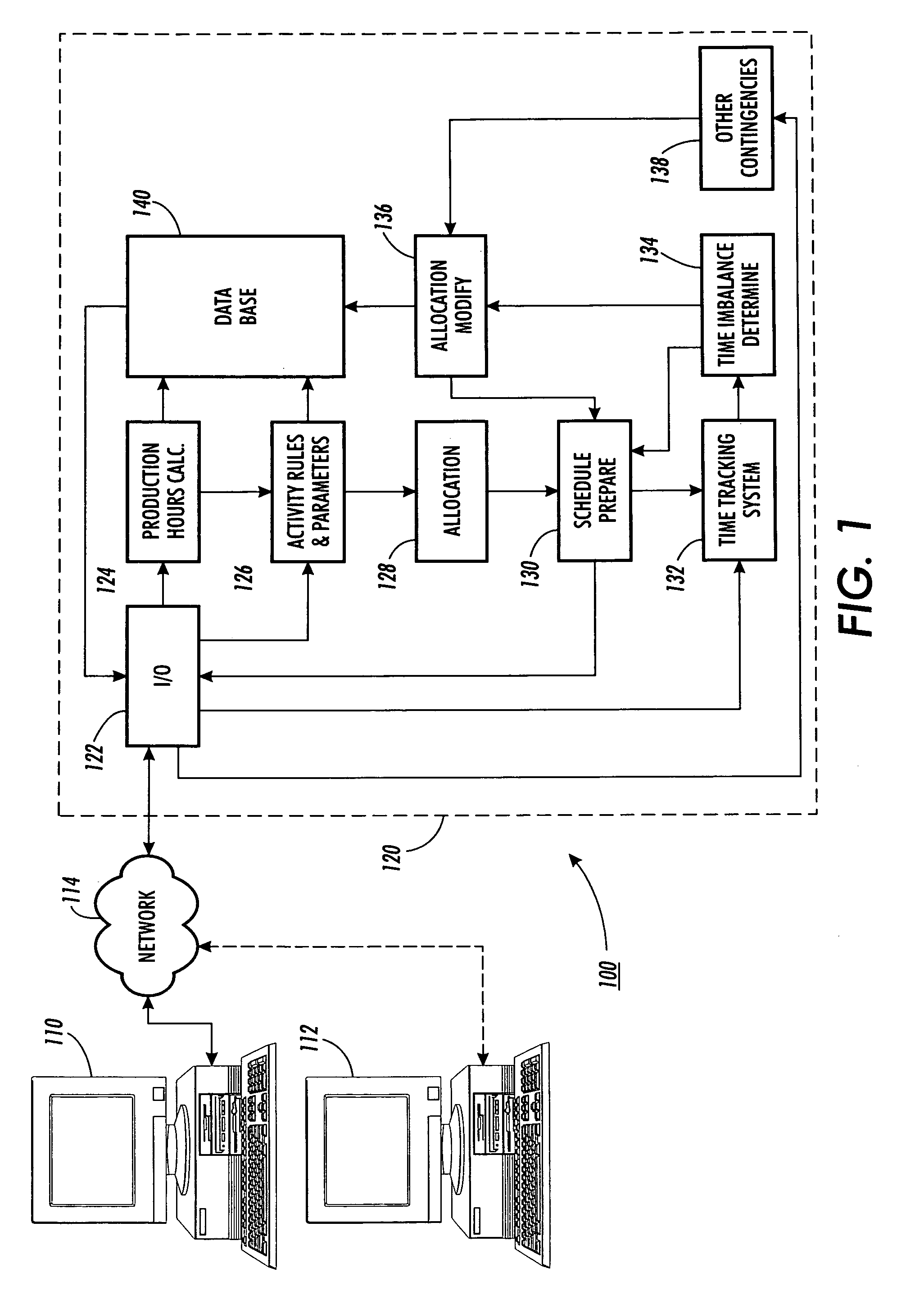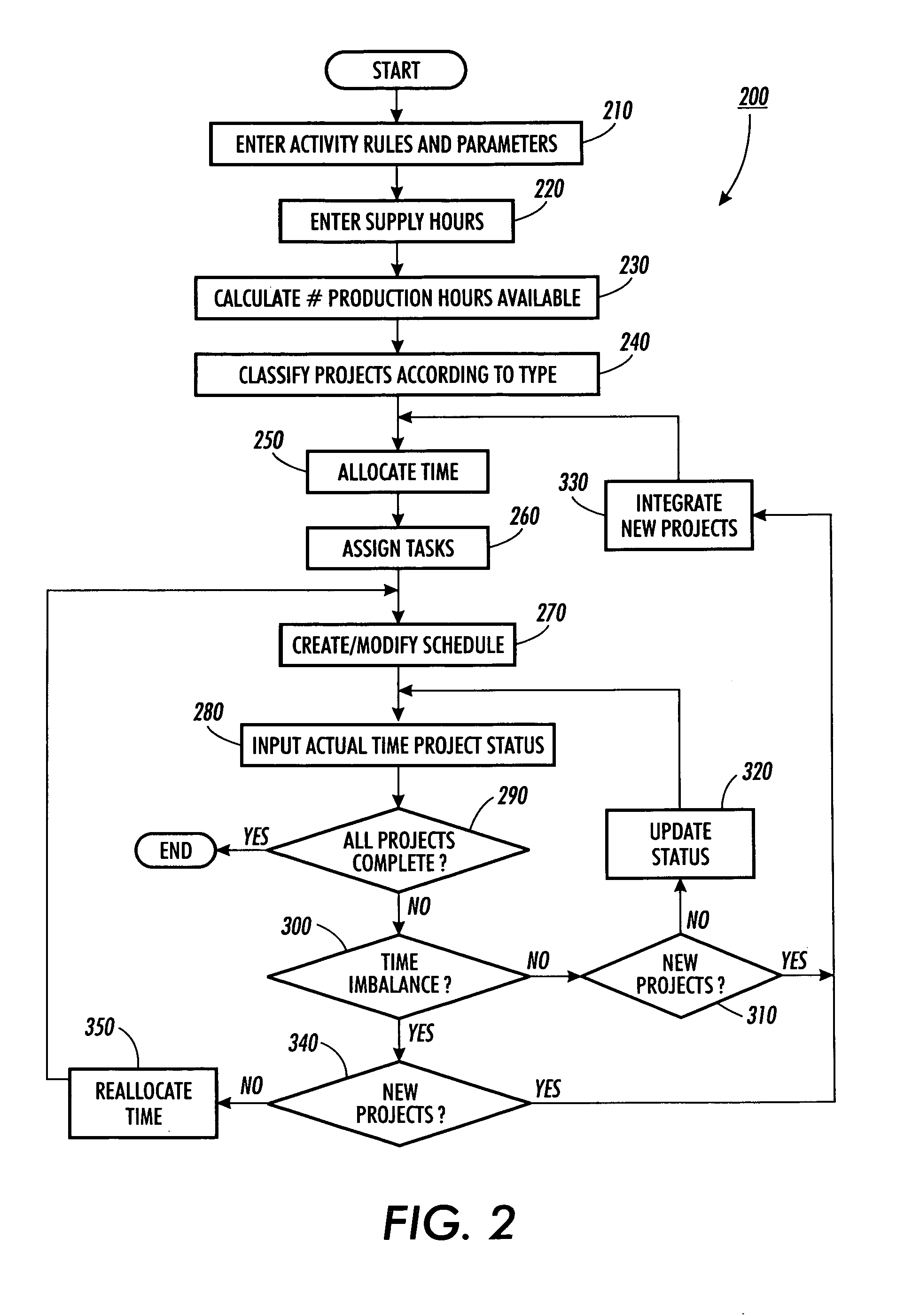[0003]A first aspect of the present invention is a method for managing the planning and performance of multiple projects, the multiple projects comprising one or more projects that are identified as a mandatory type, one or more projects that are identified as nonmandatory type, and one or more projects of an ad hoc type that arise intermittently and are subject to change. The method includes calculating a number of
working hours available for performance of the multiple projects; estimating the time required for completion of each project; based on the time estimates, allocating a first amount of time for performance of the mandatory projects, allocating a second amount of time for performance of the ad hoc projects, and allocating a third amount of time to be held in reserve, wherein the sum of the first, second, and third amounts of time is less than or equal to the available hours; assigning tasks associated with the projects for performance; periodically inputting an actual time spent in performing the projects and a current status of each project; based on the actual time spent and current status for each project, reestimating the time required for completing each project; for each
project type, determining if there exists a time imbalance between the allocated time for completion and the reestimated time for completion; and if there exists a time imbalance, reallocating the first, second, and third amounts of time to eliminate the time imbalance.
[0004]A second aspect of the present invention is an
information handling system comprising a
processing system and a
project planning and
management system interconnected with the
processing system, the project planning and
management system for managing the planning and performance of multiple projects, the multiple projects comprising one or more projects that are identified as a mandatory type, one or more projects that are identified as nonmandatory type, and one or more projects of an ad hoc type that arise intermittently and are subject to change. The project planning and management system is configured to: calculate a number of
working hours available for performance of the multiple projects; estimate the time required for completion of each project; based on the time estimates, allocate a first amount of time for performance of the mandatory projects, a second amount of time for performance of the ad hoc projects, and a third amount of time to be held in reserve, wherein the sum of the first, second, and third amounts of time is less than or equal to the available hours;
record assignments of tasks associated with the projects for performance; periodically receive input of an actual time spent in performing the projects and a current status of each project; reestimate, based on the actual time spent and current status for each project, the time required for completing each project; determine, for each
project type, if there exists a time imbalance between the allocated time for completion and the reestimated time for completion; and if there exists a time imbalance, reallocating the first, second, and third amounts of time to eliminate the time imbalance.
[0005]A third aspect of the present invention is a planning system for the planning and management of multiple projects, the multiple projects comprising one or more projects that are identified as a mandatory type, one or more projects that are identified as nonmandatory type, and one or more projects of an ad hoc type that arise intermittently and are subject to change. The planning system comprises an input means for entering project information and task information associated with each project, the project information identifying each project as being of a mandatory, nonmandatory, or ad hoc type, and the task information describing each task to be performed by users of the system and an estimated duration of each task; a work hour calculator for calculating a number of
working hours available for performance of the multiple projects; an allocation engine for allocating a first amount of time for performance of the mandatory projects, a second amount of time for performance of the ad hoc projects, and a third amount of time to be held in reserve, wherein the sum of the first, second, and third amounts of time is less than or equal to the available hours; a schedule preparation engine for preparing a schedule of tasks for performance, the schedule comprising an estimated time for the performance of each task; a time
tracking system for recording actual time spent in performing the projects and a current status of each project; a time imbalance calculator for detecting a difference between actual time spent in performance of the projects and the estimated time for performance of the projects; and an allocation modification engine for reestimating the time required for completing each
project based on the actual time spent and current status for each project and reallocating time to eliminate any time imbalance detected by the time imbalance calculator.
 Login to View More
Login to View More  Login to View More
Login to View More 


